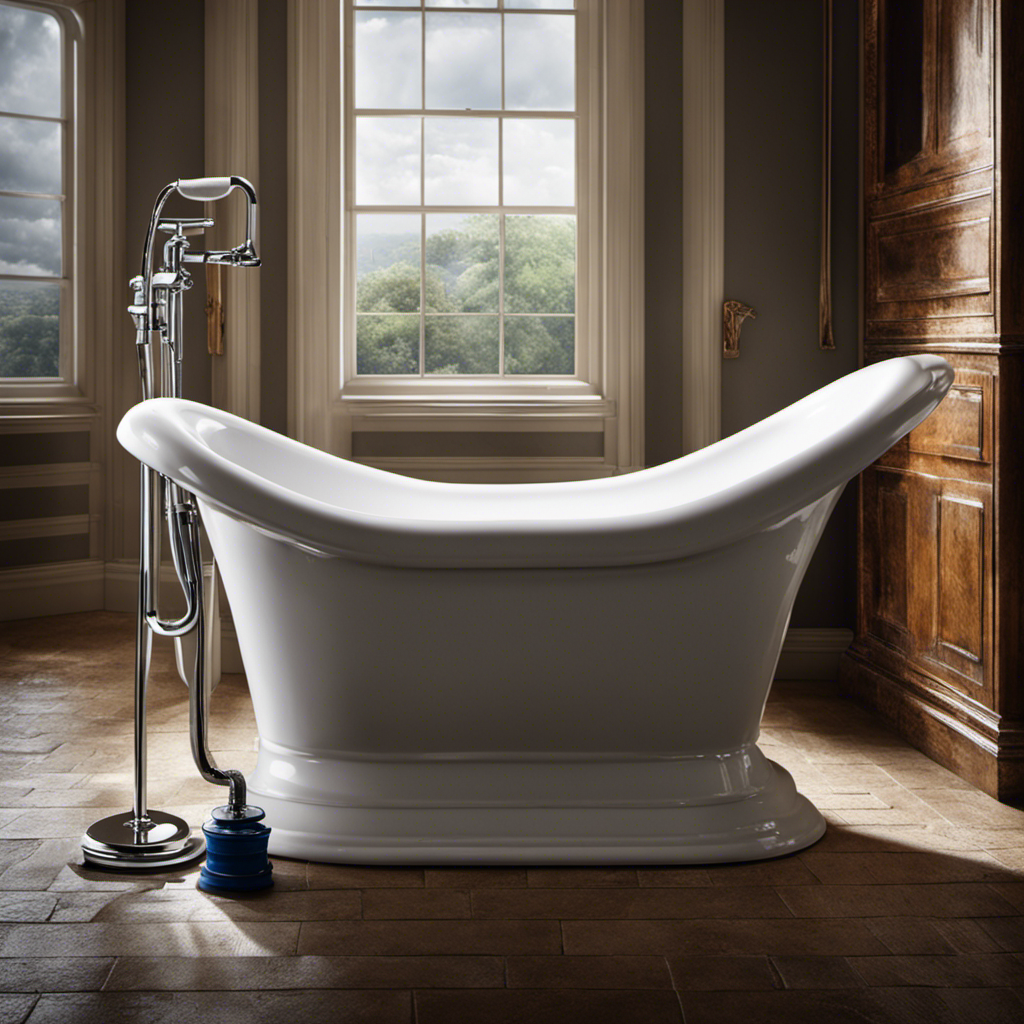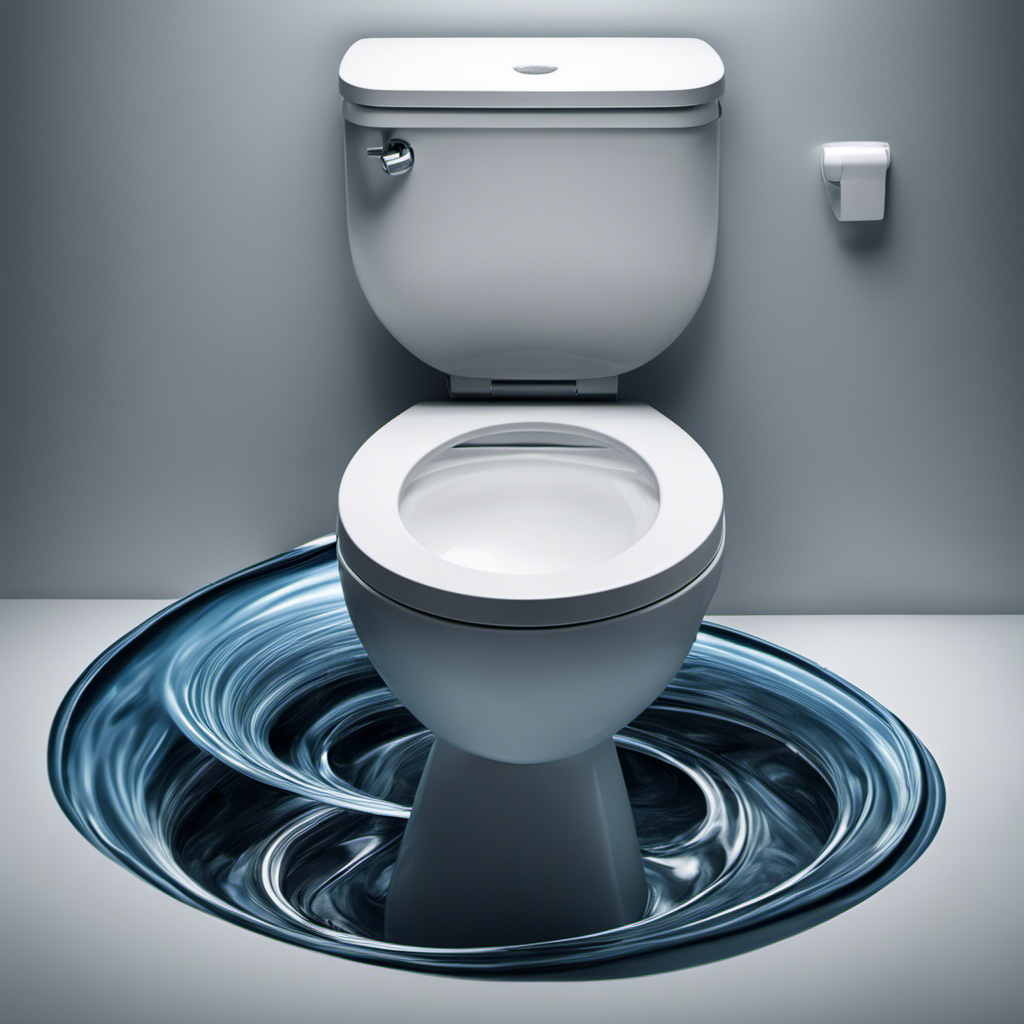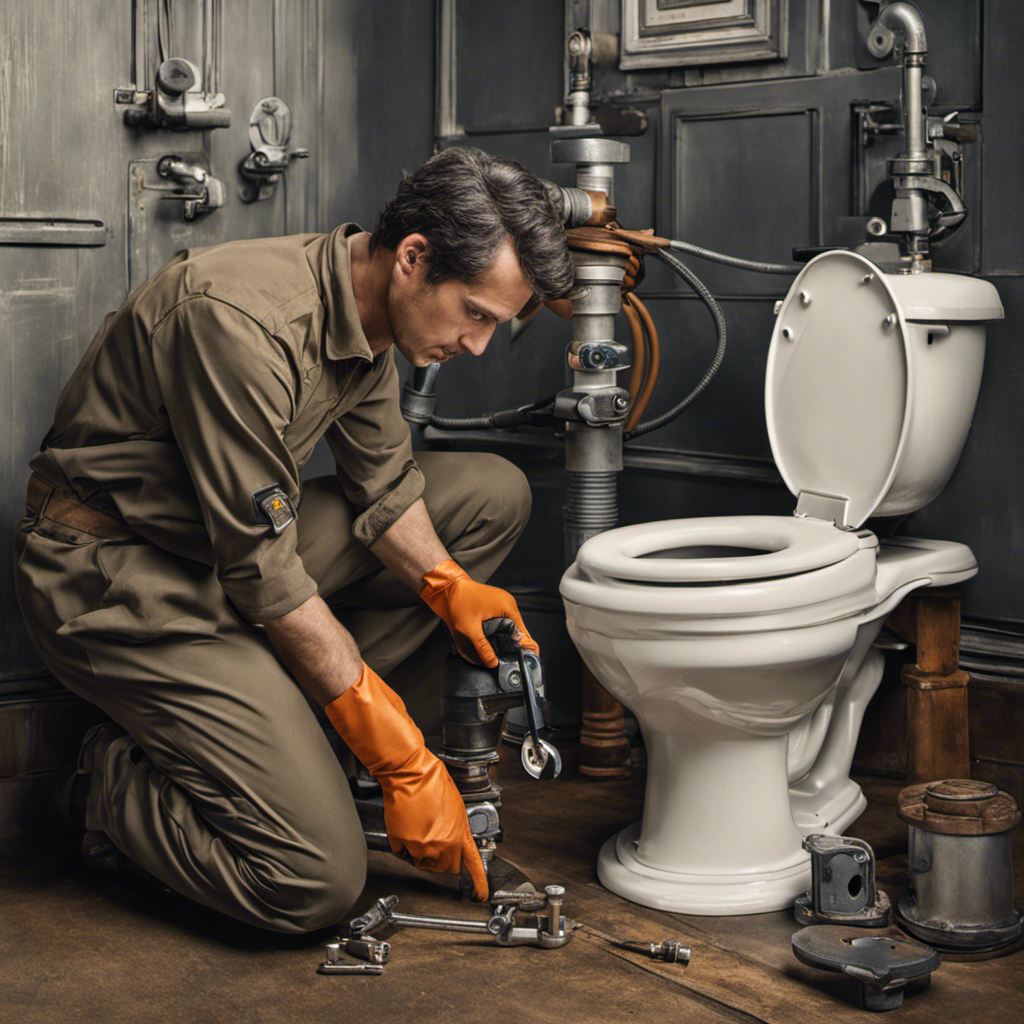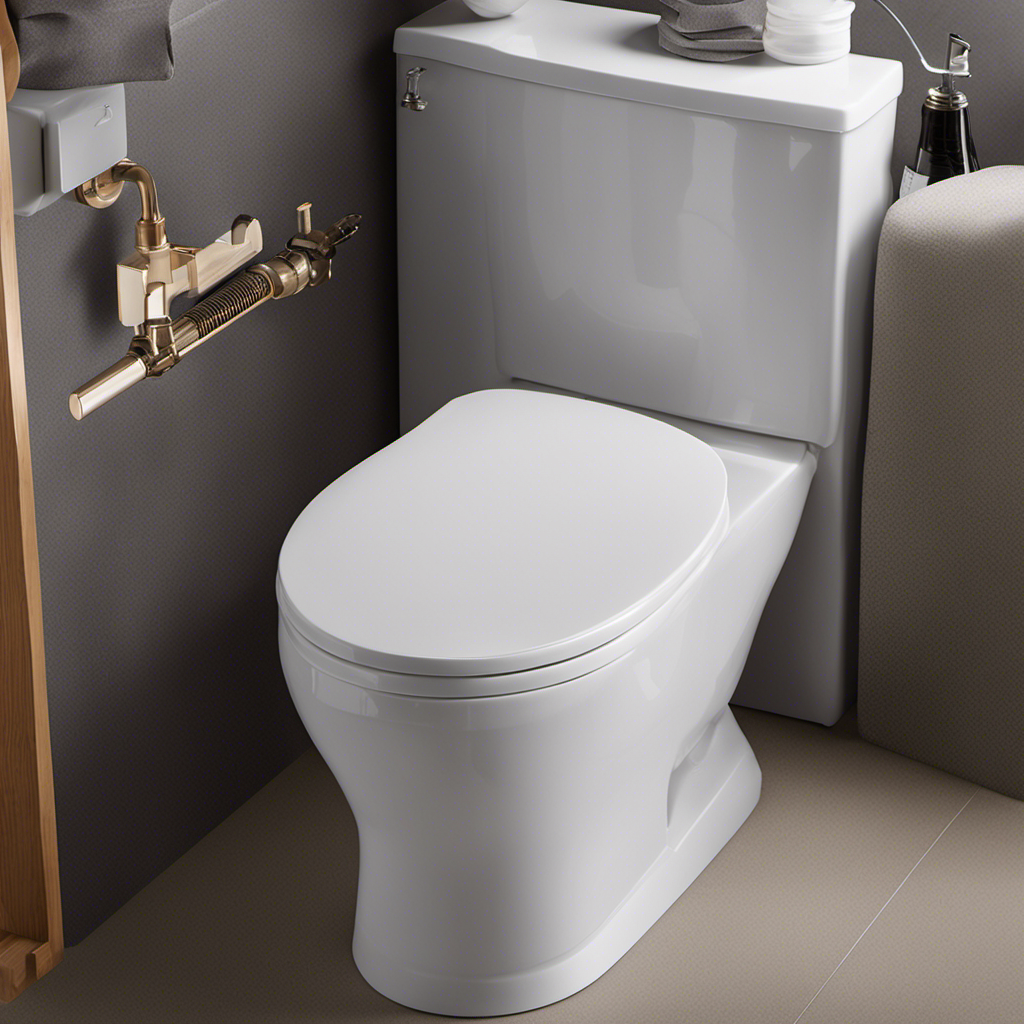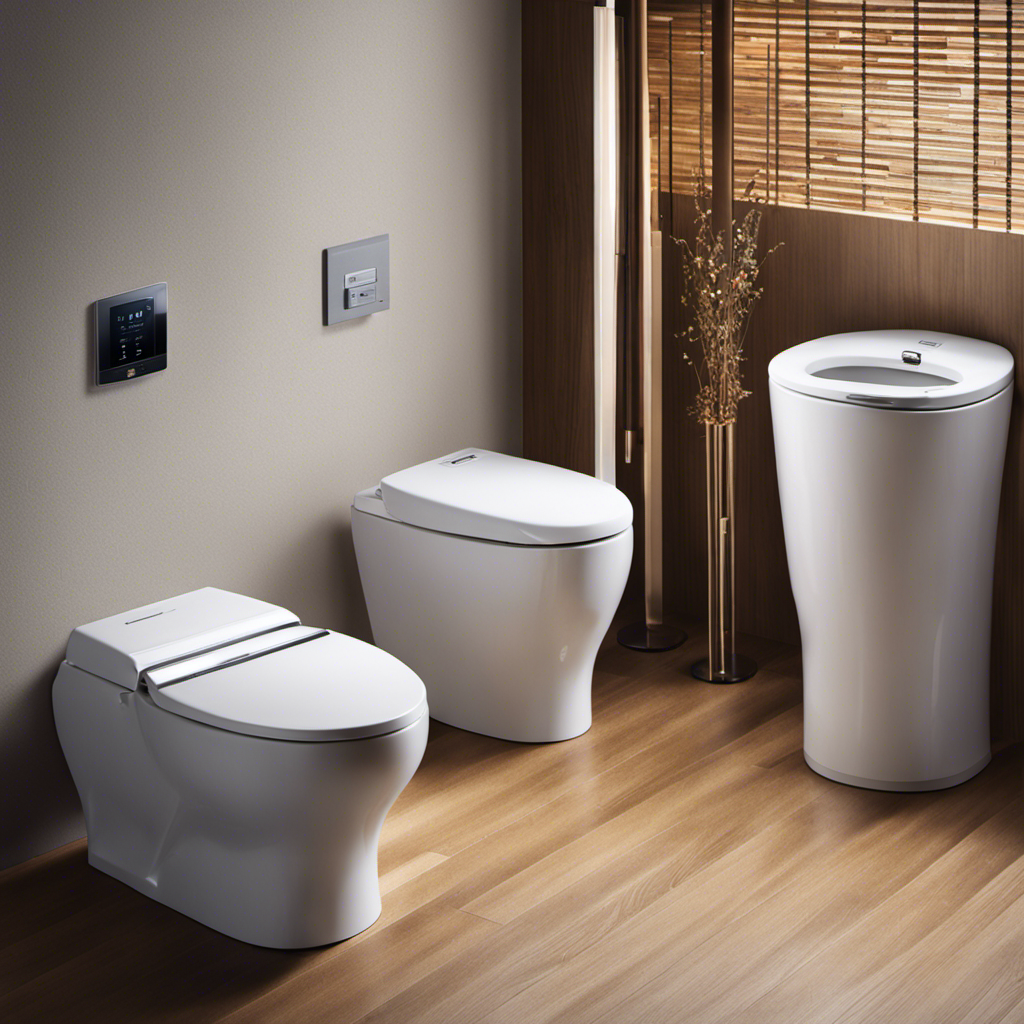So, you’re enjoying a nice relaxing bath when suddenly, disaster strikes. The toilet decides it wants to join in on the fun and starts backing up into the bathtub. Talk about a party pooper!
But fear not, my friend, because I’ve got the step-by-step solution to unclogging that pesky toilet and saving your bath time. With just a few tools and a little bit of know-how, you’ll be able to tackle this problem like a pro.
Let’s get down to business and get that toilet back in its rightful place.
Key Takeaways
- Identifying the problem is crucial to prevent further damage to the plumbing system.
- Having the necessary tools and materials, such as a plunger, bucket, gloves, and drain snake, ensures an effective unclogging process.
- Following a step-by-step unclogging process, including using a plunger and toilet auger, helps dislodge the clog and restore proper drainage.
- If dealing with stubborn blockages, using a plumbing snake can effectively break up the clog, but if the blockage persists, it’s advisable to call a professional plumber.
Identifying the Problem
First, you’ll need to figure out if the clog is causing the toilet to back up into the bathtub. This can be done by observing the signs of a larger issue.
If you notice that the water in the toilet bowl rises when you run water down the bathtub drain, it’s likely that there’s a clog in the drainpipe.
Another troubleshooting method is to check if the bathtub drains slowly or if there are gurgling sounds coming from the toilet when you flush. These are additional signs that indicate a clog in the drain system.
Identifying the problem accurately is crucial in order to effectively unclog the toilet and prevent further damage to your plumbing system.
Tools You’ll Need
To get started, you’ll need a toilet plunger, a bucket, and a pair of gloves. These tools are essential for unclogging a toilet that’s backing up into the bathtub.
The toilet plunger is designed specifically for this task and will help create suction to dislodge the blockage.
The bucket is necessary to catch any excess water that may overflow during the unclogging process.
Wearing gloves is important to protect your hands from any germs or bacteria that may be present in the toilet water.
In addition to these basic tools, you may also consider using a drain snake if the plunger doesn’t work. A drain snake is a long, flexible tool that can reach deep into the pipes to remove stubborn clogs.
Now that you have all the necessary tools, let’s move on to the step-by-step unclogging process.
Step-by-Step Unclogging Process
In order to successfully unclog a toilet that is backing up into the bathtub, there are a few essential tools that you will need.
The first tool you will need is a plunger, which is crucial for creating the necessary pressure to dislodge the clog.
Additionally, having a toilet auger on hand can be helpful for more stubborn clogs that cannot be cleared with a plunger alone.
Common causes of clogs include excessive toilet paper usage, flushing non-flushable items such as wipes or feminine hygiene products, and mineral build-up in the pipes.
Required Tools for Unclogging
One of the tools you’ll need to unclog the toilet and bathtub is a plunger. However, if you don’t have a plunger on hand, there are a few alternatives you can try.
Here are some options:
-
Plumbing Snake: A plumbing snake is a long, flexible tool that can be inserted into the drain to break up and remove clogs. It works by either pushing the blockage through or pulling it back up.
-
Baking Soda and Vinegar: Mix equal parts baking soda and vinegar and pour it down the drain. Let it sit for about 30 minutes, then flush with hot water. The fizzing action helps break up the clog.
-
Chemical Drain Cleaners: These products contain powerful chemicals that dissolve clogs. Follow the instructions on the label carefully and use caution when handling these substances.
Common Causes of Clogs
Clogs in drains can often be caused by excessive amounts of hair and debris. When these substances accumulate in the pipes, they can create blockages that prevent proper drainage. It’s important to recognize the common signs of a clogged drain, such as slow draining water, gurgling sounds, and unpleasant odors. If you’re experiencing these symptoms, there are DIY solutions you can try before calling a professional plumber. One effective method is to use a plunger to create suction and dislodge the clog. Another option is to use a drain snake or auger to physically remove the blockage. Additionally, chemical drain cleaners can be used, but caution should be exercised as these can be harmful to both the pipes and the environment. By utilizing these DIY solutions, you can often unclog drains and restore proper drainage without the need for professional assistance.
| Common Signs of a Clogged Drain | DIY Solutions |
|---|---|
| Slow draining water | Use a plunger to create suction |
| Gurgling sounds | Use a drain snake or auger to physically remove the clog |
| Unpleasant odors | Consider using chemical drain cleaners with caution |
Dealing With Stubborn Blockages
If you’ve tried plunging and it hasn’t worked, you can use a plumbing snake to tackle those stubborn blockages. Here’s how to do it:
-
Prepare the snake: Put on gloves and protective eyewear. Extend the snake fully and lock it in place.
-
Insert the snake: Insert the snake into the drain opening, pushing it gently but firmly. Keep going until you feel resistance.
-
Rotate and remove: Once you feel resistance, rotate the snake clockwise to break up the clog. Then, slowly pull the snake out, taking care not to scratch the porcelain.
By following these steps, you can effectively deal with difficult clogs using a plumbing snake.
If the blockage persists, it may be time to call a professional plumber. However, for most minor clogs, this home remedy should do the trick.
Preventative Maintenance Tips
To prevent future blockages, make sure to regularly clean out your drains using a mixture of vinegar and baking soda. This simple DIY solution is an effective preventative measure that can save you from the hassle and expense of dealing with stubborn clogs.
Here is a step-by-step guide on how to clean your drains using vinegar and baking soda:
- Gather the necessary materials: vinegar, baking soda, a measuring cup, and a small funnel.
- Measure out 1 cup of baking soda and pour it into the drain.
- Follow it up with 1 cup of vinegar. The mixture will create a fizzing reaction that helps break down any buildup.
- Let the mixture sit for at least 30 minutes.
- Finally, flush the drain with hot water to clear out any remaining residue.
Calling a Professional
When it comes to calling a professional for unclogging a toilet that’s backing up into the bathtub, there are a few key factors to consider.
Firstly, the cost of hiring a professional plumber should be taken into account.
Secondly, the amount of time saved by hiring a professional should also be considered, as they have the expertise and equipment needed to efficiently and effectively unclog the toilet.
Lastly, the expertise and equipment needed are crucial aspects to consider, as professionals have the necessary skills and tools to tackle the issue.
Cost of Hiring
You can save money by not hiring a plumber and instead unclogging the toilet and bathtub yourself. Here are some cost-saving DIY alternatives to consider:
-
Plunger Method: Start by using a plunger to create suction and dislodge the blockage. Place the plunger over the drain and push down firmly, then pull up quickly. Repeat this motion several times until the drain starts to clear.
-
Hot Water and Dish Soap: Boil a kettle of water and mix it with a generous amount of dish soap. Pour the mixture into the toilet bowl and let it sit for a few minutes. The hot water and soap will help break down the clog, making it easier to flush away.
-
Plumbing Snake: If the blockage is stubborn, you can use a plumbing snake to physically remove it. Insert the snake into the drain and rotate it clockwise to catch the clog. Once caught, pull the snake out along with the clog.
Time Saved by
Now that we’ve discussed the cost of hiring a professional, let’s talk about the time saved by opting for quick fixes when unclogging a toilet that’s backing up into the bathtub. Time is of the essence in these situations, and waiting for a plumber to arrive can be frustrating. Instead, you can try some simple techniques to resolve the issue yourself. To help you understand the time-saving potential of these methods, I’ve created a table below:
| Quick Fix | Time Required |
|---|---|
| Plunger | 5 minutes |
| Hot Water and Dish Soap | 10 minutes |
| Plumbing Snake | 15 minutes |
| Enzyme-based Cleaner | 20 minutes |
| DIY Drain Cleaning Mixture | 30 minutes |
Expertise and Equipment Needed
To save time and ensure the job is done properly, it’s important to have the necessary expertise and equipment when dealing with clogged drains. Here are some equipment options and DIY methods to consider:
-
Plunger: A plunger is a basic tool that can help dislodge minor clogs by creating pressure and suction.
-
Drain snake: A drain snake is a flexible cable that can be inserted into the drain to remove clogs that are further down the pipe.
-
Chemical drain cleaner: Chemical drain cleaners can be effective for breaking up clogs, but they should be used with caution and only as a last resort.
By having these tools readily available, you can tackle clogged drains efficiently and effectively. However, if the clog persists or you encounter more serious issues, it may be necessary to seek professional assistance.
Now, let’s move on to troubleshooting common issues.
Troubleshooting Common Issues
If the toilet is backing up into the bathtub, it’s likely due to a clog in the main sewer line. Before calling a professional plumber, there are troubleshooting techniques you can try to resolve the issue on your own. However, it’s important to be aware of common DIY mistakes that can worsen the situation.
Here are the steps to troubleshoot the problem:
-
Check if other drains are affected: If only the toilet and bathtub are having issues, it’s a sign of a localized problem.
-
Plunge the toilet: Use a plunger to create suction and dislodge the clog. Make sure to cover the bathtub drain to prevent any mess.
-
Use a drain snake: Insert the snake into the toilet drain and gently rotate it to break up the clog. Be cautious not to damage the pipes.
-
Chemical drain cleaners: If the clog persists, you can try using a chemical drain cleaner. Follow the instructions and use caution.
Frequently Asked Questions
How Do I Know if the Clog Is in the Toilet or the Bathtub Drain?
To determine if the clog is in the toilet or bathtub drain, start by checking if water is backing up into the bathtub. If it is, the clog is likely in the bathtub drain.
Can I Use Chemical Drain Cleaners to Unclog the Toilet and Bathtub?
I wouldn’t recommend using chemical drain cleaners to unclog the toilet and bathtub. There are alternative methods that are effective and don’t involve harmful chemicals. Let me explain how to unclog and maintain drains without them.
What Should I Do if the Water From the Toilet and Bathtub Is Overflowing?
If the water from the toilet and bathtub is overflowing, I would take preventive measures to avoid further damage. It’s crucial to turn off the water supply and seek professional plumbing services immediately.
Are There Any Risks of Damaging the Plumbing System While Unclogging the Toilet and Bathtub?
There are risks of damaging the plumbing system when attempting DIY methods to unclog a toilet and bathtub. It is beneficial to hire professional plumbing services for a safe and effective solution.
Is There a Specific Technique or Method to Prevent Future Clogs in the Toilet and Bathtub Drains?
Preventive measures and maintenance techniques can help avoid future clogs in toilet and bathtub drains. By regularly cleaning and using drain guards, you can reduce the risk of blockages and keep your plumbing system functioning smoothly.
Conclusion
In conclusion, unclogging a toilet that’s backing up into the bathtub can be a messy and frustrating task. However, with the right tools and a step-by-step approach, you can tackle even the most stubborn blockages.
Imagine the satisfaction of successfully clearing the pipes, restoring the flow of water, and preventing future issues. Remember to practice regular preventative maintenance to keep your plumbing system in top shape.
If all else fails, don’t hesitate to call a professional for help. Your bathroom will thank you!
